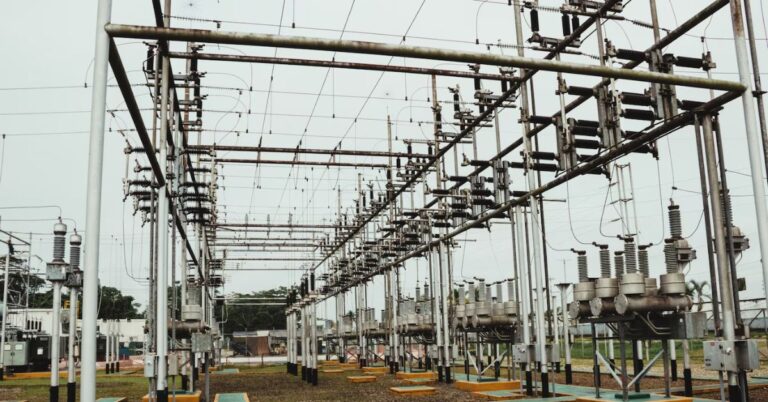Industrial progress hinges on efficiency, and one critical factor in achieving efficiency is effective power transfer. Whether in a manufacturing plant, research laboratory, or heavy machinery operation, the ability to transmit power efficiently and precisely is at the core of operational excellence. This blog explores how industrial facilities can streamline power transfer processes to optimize performance, reduce downtime, and facilitate safety compliance.
Understanding Power Transfer Systems
Power transfer systems are fundamental to a range of industrial processes. By transferring power from one point to another, these systems are responsible for driving operations, whether it’s rotating machinery, hydraulic systems, or electronic equipment. Understanding the main types of power transfer systems is key to recognizing how they underpin industrial efficiency.
Hydraulics in Power Transfer
Hydraulic systems, known for their robustness, play a central role in industrial power transfer. Utilizing fluid power, they can efficiently deliver immense forces with minimal space requirements. Hydraulics are widely used across sectors such as automotive, aerospace, and manufacturing due to their precision and reliability. Companies often consult hydraulic manufacturers to design custom systems that align with their specific needs.
Electric Drives
Electric drives convert electrical energy into mechanical power for motion control, making them indispensable in factories and research laboratories. With advancements in automation, electric drives now offer greater energy efficiency, faster response times, and precise speed control. Industries like robotics and logistics employ electric drives to streamline operations while reducing energy consumption.
Belt and Chain Drive Systems
Belt and chain drives are longstanding power transfer solutions ideal for low-cost, scalable operations. They are commonly found in conveyor systems, elevators, and grinding machines. Although slightly dated compared to more advanced technologies, these systems remain useful in applications where precision and energy consumption are secondary to simplicity.
Advantages of Optimized Power Transfer
When power transfer systems operate efficiently, the impact spans the entire industrial ecosystem. Here’s why streamlining power transfer is a game-changer:
1. Higher Energy Efficiency
Efficient power transmission reduces energy waste. Hydraulics and electric drives, in particular, offer energy savings by minimizing load loss and converting energy with maximum efficacy. This efficiency not only lowers operating costs but also reduces a facility’s environmental footprint.
2. Enhanced Precision
Advanced power transfer systems, like electric drives with programmable controllers, enable precise positioning and torque control. This precision is critical in production lines requiring accuracy, such as semiconductor manufacturing or precision welding.
3. Minimized Wear and Tear
Optimized systems reduce wear on components such as gears, belts, and chains, thereby extending equipment life and minimizing downtime for repairs. For instance, hydraulic systems operate with fewer moving parts compared to mechanical systems, which decreases maintenance requirements.
4. Adaptability Across Industries
Thanks to emerging technologies, systems like hydraulic-electronic hybrids now integrate seamlessly into various industrial setups. From heavy-duty excavators to advanced laboratory centrifuges, adaptable power transfer solutions cater to unique requirements.
Components of Streamlined Power Transfer
A streamlined system involves a strategic selection of components. Here are some of the core factors influencing the effectiveness of power transfer:
High-Quality Materials
Power transfer systems rely heavily on component durability. The use of resistant alloys and synthetic materials extends the lifespan of parts under high pressure or load.
Innovative Design
Advanced software and sensors are now used to simulate stress tests on designs before implementation. Hydraulic systems, for instance, are optimized by minimizing leak points and pressure losses during system testing.
Integration with IoT (Internet of Things)
Modern industrial operations leverage IoT-enabled sensors to track the performance of power transfer systems. These sensors continuously monitor data such as load, speed, and temperature, enabling real-time adjustments that enhance overall performance.
Overcoming Common Challenges in Power Transfer
While the advantages of streamlined power transfer systems are clear, they are not without challenges. Understanding these pitfalls is vital for mitigating risks:
Lack of Specialized Training
Efficient operation often depends on personnel understanding the intricacies of the power transfer system. Training programs tailored to specific industries can boost workforce competence.
Regulatory Compliance
Safety and environmental regulations differ by region and sector. Unoptimized systems risk non-compliance, leading to financial penalties or operational shutdowns. Adhering to global safety standards during system setup is essential.
System Downtime
Unplanned downtime remains a concern due to wear-and-tear or external interference. Predictive maintenance, aided by AI tools, can identify potential failures before they result in costly downtime.
Future Trends in Power Transfer
The world of industrial power transfer is constantly evolving, driven by technological advancements and shifting economic priorities. Here are some trends shaping its future:
Green Energy Integration
Power transfer systems in industries are increasingly being tailored to work seamlessly with renewable energy sources. Solar-powered hydraulic systems and electric drives running on wind-generated energy are examples of advancements in this sphere.
Automation and AI
Artificial Intelligence is revolutionizing power transfer by enabling predictive maintenance, automated adjustments, and intelligent load distribution.
Advanced Materials
Nanomaterials and composites are being developed to withstand extreme pressures and temperatures, enabling more resilient systems with minimal material mass.
Building an Efficient Industrial Future
Power transfer systems are the backbone of industrial progress. By implementing streamlined solutions across hydraulics, electric drives, and belt systems, industries can significantly boost efficiency, improve sustainability, and minimize operational hiccups. For professionals in manufacturing or research looking to innovate, understanding and optimizing these systems isn’t just beneficial—it’s essential.

